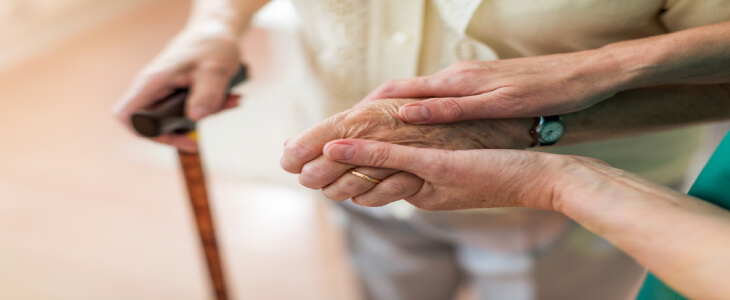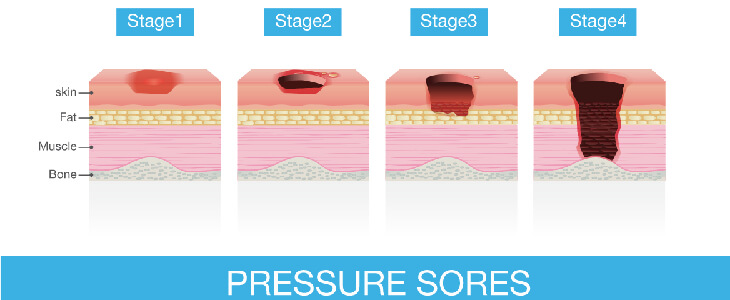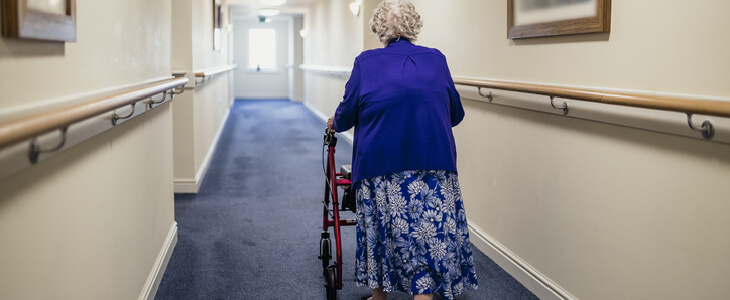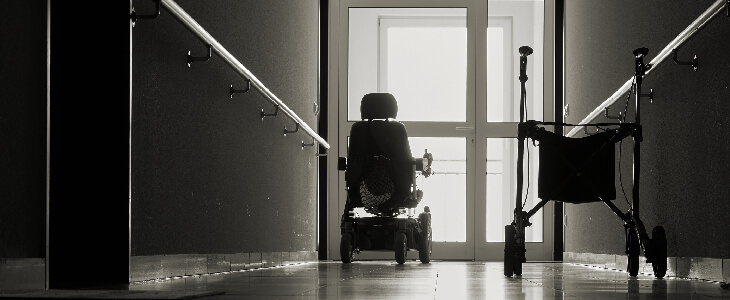Abuse or Neglect by a Caregiver
Trial Attorneys Texas represents victims of elder abuse, as a result of negligent or intentional acts. We aggressively hold responsible persons and institutions that abuse and neglect our seniors and others in residential or outpatient care.
Nursing Facility abuse occurs when caretakers harm residents of inpatient care facilities. Sadly, such abuse is a prevalent problem due to issues like understaffing, improper training, and burnout. Fortunately, there are steps that you can take if an older person you love has suffered from nursing home abuse. First, you can keep them safe by reporting abuse to proper authorities, like the police, Adult Protective Services (APS, or a lawyer at Trial Attorneys Texas. We are often able to help obtain financial compensation to pay for your loved one’s medical care and other expenses through legal help.
Nursing Home Negligence: Protecting The Most Vulnerable

Learning or suspecting that your family member may not be in good hands at a nursing home can be devastating. If you or a loved one is concerned about the welfare of a family member residing in a nursing home, you need the legal counsel of an experienced lawyer.
At Trial Attorneys Texas, we understand your concerns, and we are ready to help. Our attorneys have extensive experience with nursing home negligence cases. We have been committed to fighting for family members’ rights and holding the liable parties accountable since 1998. Early actions can make a significant difference.
Nursing Home Abuse Statistics
Texas is the worst state in the nation for elder care according to the AARP. Indeed, nursing home abuse statistics in Texas are truly staggering. Regarding nursing home cleanliness and safety, Texas has twice in a row been ranked worst in the United States. 80% of Texas nursing homes consistently fail to receive an above-average rating score during health inspections, and 95% of Texas nursing homes have committed some violation of either state or federal safety regulations. Find & compare nursing homes, hospitals & other providers near you.
At the broadest level, more than two (2) million cases of elder abuse are reported every year, and almost one (1) out of every ten (10) elderly individuals will experience some form of elder abuse. As many as 1 in 3 older people have been victims of nursing home abuse. Further, 2 in 3 staff members surveyed by the World Health Organization claimed they had abused or neglected residents.
Even more alarming is a 2019 NPR report, setting forth findings of the Office of Inspector General (OIG) that 97% of nursing home abuse cases across 5 states were not reported to local law enforcement as required.
Types of Nursing Home Abuse Injuries & Symptoms
Elder abuse and neglect may involve physical abuse, sexual abuse, psychological abuse, emotional abuse, exploitation, or neglect. Elder abuse is not only the actions of direct caregivers but also other people who have a relationship with them, such as adult children, relatives, or friends. Elder abuse can occur in any setting where older people live, including nursing homes, rehabilitation facilities, and skilled nursing settings. Not all physical injuries are cause for immediate concern, but it is the responsibility of caregivers to ensure injuries and abuse are prevented. Recurring or excessive physical injuries in any form must be taken seriously.
Physical Abuse or Neglect
Signs of elder neglect include:
- Bedsores/Pressure Sores/Ulcers: Although commonly as-sociated with neglect, bedsores can be a sign of physical abuse if a caregiver knowingly allows them to occur and does not take adequate steps to prevent or heal these sores. A bed sore is essentially an open wound on the body, often occurring in bony areas such as the elder’s back, ankles, hips or buttocks. Nursing home staff members have access to established skin health management procedures that prevent incidents like this from happening. Unfortunately, elder abuse and neglect can also lead to serious dehydration, malnutrition, or poor hygiene.

- CMS recognizes facility-acquired pressure sores as “never events,” meaning that nearly every bedsore is preventable with proper skin care protocols.
- Gangrene: Gangrene is dead and decomposing flesh on a living person. Without proper bathing and care, nursing home residents can develop skin infections or gangrene. In 2017, an 84-year-old nursing home resident in Florida died after gangrene caused his genitals to rot. The infection set in because nursing home residents did not wash him properly, according to a report from Naples Daily News.
- Inadequate Hygiene: An elder who does not receive adequate hygiene may appear dirty or have a bad smell. They may also experience teeth decay, persistent infection, or other indicators of poor hygiene. This can be a common issue in understaffed nursing homes where bath quotas may be overlooked.
- Malnutrition, Dehydration & Weight Loss: Inadequate nutrition and hydration can be indicators that an elder is not eating properly. In many cases, these are symptoms of self-neglect and may need direct interference from loved ones.
- Improper Medication: Neglected individuals may not take their medications or may be given improper doses. They also may be given medications for the wrong reasons.
A 2017 study conducted by the Washington Post estimated that nearly 180,000 nursing home patients are unnecessarily given antipsychotics each week. The Post noted that the drugs are given to sedate patients rather than to treat actual issues.

Examples of physical abuse injuries include:
- Bruises: Bruises, including black eyes, are one of the most common indicators of abuse. Newer bruises will appear as dark blue or purple marks on the skin, changing to yellow over time. Unlike in younger individuals, it can take several weeks for the bruise on an elder to turn yellow, making it difficult to determine the exact time and cause of some bruises.
- Burns: Skin burns can be a symptom of active abuse or neglect. Burns are characterized by damaged tissue as the direct result of extreme heat, like cooking burns or friction, such as rope burns.
- Welts: Appearing on the skin as red, raised bumps, there are many different causes of welts. Some of which can be indicative of elder abuse.
- Cuts & Lacerations: These injuries can be identified by cuts or scars and can appear anywhere on the body.
- Skin Tears: As people age, their skin becomes more susceptible to tearing. Skin tears look like rips, flaps or tissue loss and can vary in severity. Skin tears can be an indicator of handling that is too rough, intentional or not.
- Broken Bones & Fractures: The bones of elderly individuals are more porous, making fractures or breaks a more common occurrence. While some broken bones and fractures can result from accident, it is also possible to see these symptoms in physical abuse victims.
- Dental Injuries: Sudden damage to the teeth or surrounding bones can be an indicator of trauma.
- Head Injuries: Injuries to the head resulting in mild traumatic brain injury (TBI) or worse can be a sign of physical abuse, although there may be other causes as well.
- Malnutrition & Dehydration: A lack of proper nutrition and hydration can occur when elders are not being properly cared for or when they lose appetite due to trauma.
- Insomnia & Sleep Issues: An inability or unwillingness to sleep can indicate physical abuse, particularly if pain is causing the disturbances or if the victim fears their abuser will return at night.
- Chronic Pain: Ongoing or recurrent pain in any form can be a symptom of physical abuse.
- New Illnesses: Physical and mental strain on the body can also cause physical abuse victims to catch new diseases or illnesses. Unfortunately, it can be very challenging to directly link a new illness to physical abuse.
- Worsened Existing Conditions: In addition to new injuries or illnesses, physical trauma can also worsen pre-existing health issues. This is because physical trauma prevents the body from properly taking care of itself.

Signs of Psychological Trauma include:
- Anxiety/Fear: Elders who have been emotionally abused may become anxious or fearful, possibly to the extent of hypervigilance.
- Aggression: Unexpected or unexplained aggression can also be an indicator of abuse used by the elder as a defense mechanism. This can be particularly apparent if elders are aggressive only towards one or two individuals.
- Depression: Symptoms of depression, like withdrawal from social scenarios, oversleeping and lack of interest in activities, can all be signs of emotional abuse.
- Learned Helplessness: Elders who have been emotionally abused may become helpless, expecting others to do tasks that are within their abilities.
- Low Self-Esteem: A noticeable decline in self-esteem or self-worth can be an indicator of prior or ongoing emotional abuse. Elders may suddenly feel undesirable, stupid or helpless.
- PTSD: Individuals who have been abused may show other signs of post-traumatic stress disorder (PTSD), including panic attacks.
- Substance Abuse: Ongoing elder abuse can lead to substance abuse as a coping or escape mechanism.
- Suicidal Thoughts/Attempts: Long-term emotional abuse can cause elders to contemplate or attempt suicide.
The above list is by no means all-inclusive. Emotional abuse tends to impact the personality and mental health of an individual and can, therefore, manifest itself in unexpected ways. If you suspect emotional abuse may be occurring, take immediate action.
Indicators of sexual abuse:
- Genital Injury: Unexplained bruising, swelling or physical injury to the vagina, penis or anus can be indicative of sexual abuse.
- Breast Injury: Bruising or injury to the breasts or chest are a common symptom of sexual abuse.
- Mouth Injuries: Bruising on the top of the mouth or to the uvula that dangles in the back of the throat can be symptoms of forced oral sex.
- Urinary Tract Infections (UTIs): Recurrent UTIs can indicate sexual abuse, as sexual activity can cause these infections.
- New STIs: A new sexually transmitted infection is a strong indicator that an individual is involved in sexual activity and can be a symptom of sexual abuse.
- Increased Interest In Sex: A sudden interest or obsession with sex or sexual content can occur when individuals are sexually abused. They may suddenly say sexually suggestive things or want to access more sexual content. They may also become sexually aggressive towards other individuals.
- Inappropriate Relationships: A change in relationship or behavior between a caregiver and elder may be a sign of sexual abuse. This change could be perceived as negative, such as a sudden fear, or it could appear to be “positive,” like a new infatuation.
Older adults who have been sexually abused often do not tell anyone due to embarrassment, retaliation fears from their abuser, or don’t even realize that they have been victimized. It is important to take any of these symptoms seriously when observed. If you suspect sexual abuse is occurring to you or your loved one, report it immediately.
Risk of Nursing Home Abuse Statistics
Broken down by Race, Sex, Gender and Age
According to a 2010 study published by the Department of Health and Human Services, African-American nursing center residents are most likely to be abused. One out of every six African Americans that reside in nursing homes is either suffering or at risk for abuse.
Gender plays into this statistic, as well. For example, of the African Americans that are abused in nursing homes, roughly 70 percent of them are female. This percentage contrasts to Caucasian residents, 90 percent of whom are male in instances where abuse occurs. The Department of Health and Human Services also notes a higher rate of reported suspected cases for Caucasian senior home residents than African Americans.
While more men than women experience abuse in nursing homes, women are twice as likely to die from it. For every man who dies due to suspected abuse, roughly two females die the same way. Because women tend to be already bedridden and less mobile, it is likely easier for abusers to hurt them without being detected.
The Department of Health and Human Services reports that the average age of nursing home residents is 80 years old. However, this statistic varies greatly depending on race. For example, African Americans tend to be in their late 70s, Caucasians average between 82 and 86 years old, and Hispanics are around 86 years old on average when abused.
Studies indicate that many elder home residents live below the poverty line—roughly 30 percent. However, this doesn’t account for individuals with high income but have had to sell assets to pay for care. This percentage is difficult to pinpoint but suggests that those who can’t afford the costs of nursing home care could be more vulnerable to abuse.
The Department of Health and Human Services also reports that those individuals with certain mental health disorders are at a greater risk for abuse in skilled nursing facilities. For example, individuals with Alzheimer’s or dementia are more likely to be abused by trusted medical professionals who should be helping them, like nurses and assistants. Those that suffer from mental disorders like autism or depression are also at an increased risk of nursing home abuse.

Fighting Against Nursing Home Negligence
Before the COVID-19 pandemic, many nursing homes faced complaints and lawsuits due to the negligence and abuse of their residents. For-profit organizations tend to have many nursing homes and sometimes fail to provide the required qualified staff or ideal. conditions that are necessary in order to offer quality services.
Some common forms of abuse are:
- Physical abuse: Includes shoving or restraining with straps that can lead to broken bones, bruises, brain injuries or even death
- Financial abuse: When a staff member takes valuable personal property from a resident, uses their credit cards or bank accounts or forges checks
- Sexual abuse: Includes unwanted touching or intimate contact with a resident and other violent actions such as sexual harassment, sexual assault or the taking of explicit sexual photographs of residents
A common problem with nursing homes is understaffing, and the pandemic has made this problem worse. Improper staffing levels can diminish the quality of care that is provided. In addition, some negligent behaviors and conditions regarding COVID-19 led to more lawsuits and complaints related to inefficient actions to protect the residents’ health.
At Trial Attorneys Texas, our priority is defending the rights and welfare of family members. One of our attorneys, Jay English, is certified in personal injury law by the Texas Board of Legal Specialization since 1998, and has tried more than fifty cases to a jury verdict with excellent results. You can rest assured that you will have a committed and experienced legal team working with you. We will seek fair compensation for your loved one to recover and move forward.
Protect Your Loved One. Contact Us Today.
Early actions may save your loved one in a nursing home negligence case. Call our Dallas office at 214.528.4300 or fill out our online intake form to schedule your free initial consultation.
REFERENCES
http://www.statisticbrain.com/elderly-abuse-statistics/
http://www.ncea.aoa.gov/Library/Data/index.aspx
http://www.ncea.aoa.gov/Resources/Publication/docs/LTCF_ResearchBrief_web508.pdf
http://www.cdc.gov/nchs/fastats/nursing-home-care.htm
http://abcnews.go.com/US/story?id=92689
https://oag.ca.gov/bmfea/elder
http://www.whitehouseconferenceonaging.gov/blog/policy/post/elder-justice-policy-brief
